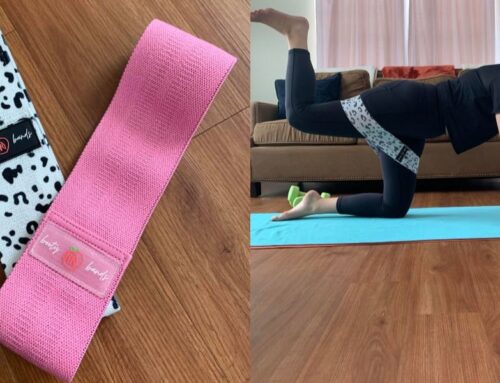
Dumbbells are a pair of weights designed to fit each hand, and most of them contain predetermined weights on each end, and you cannot change or modify them. They are used to exercise and lift weights that suit you, and are usually available in gyms, and stored on numbered shelves inside the hall so that each number is for its weight,
Dumbbells are a multi-use tool that can be used to practice many muscular activities and exercises, and you can get them at your home and use it to exercise at home without the need to visit the gyms, and you will get the best results.
In this article, we will discuss how to make your own homemade dumbbells yourself With simple steps, many options that you can use instead of dumbbells, and some tips that you can follow to carry weights that suit you.
How to Make Homemade Dumbbells?
Dumbbells are very effective for exercise, but at the same time, they can be very expensive to buy ready-made, but don’t worry!
You can make dumbbells yourself at home with simple ingredients and materials that are available in most homes, and at a very low cost, such as sand, water, and concrete.
You do not need a lot of time to make a ready-to-use dumbbell directly, and we will discuss in this way the easiest ways that you can follow to get homemade dumbbells.

How to make dumbbells with sand?
You can make dumbbells yourself at home using sand, and you need simple ingredients and tools that are available in most homes, and you need about 30-45 minutes to make dumbbells and get them ready, and you can make them by following the following tips:
Materials needed.
- Two plastic bottles of 600ml or more.
- 4.5 kg of sand.
- 20 cm Wooden stick.
- Four screws. paper.
- Foam roll.
- Wood Saw.
- Meters measure.
- Screwdriver.
- Ink pen or marker.
- Multipurpose knife.
The method of work.
- Bring the two plastic bottles and the wooden stick, then insert the stick into the neck of the bottle and make sure that it is completely fixed in the neck of the bottle and never moves.
- Cut off the top of the bottle, then set it aside, cut out another part of the remaining bottle and discard it for a shorter bottle.
- Bring the top of the bottle set aside, then attach it to the bottom of the bottle using a strong adhesive, to get a bottle of the same shape, but shorter.
- Cut the wooden stick from the middle to get two equal parts with a length of 10 cm, be sure to use the measuring meter and put a mark to cut the two parts evenly to be the handles of the dumbbells.
- Take the regular paper, then roll it into a cone and leave a hole in the bottom, and then stick it well using masking tape.
- Put the cone in the neck of the bottle, then fill the two bottles with sand through the cone to fill the two bottles completely.
- Insert the stick into the neck of the bottle at a depth of about 10 cm, to secure it well, then secure the stick inside the bottle with a screw to prevent it from falling.
- Cover a dumbbell handle or bar with a foam roll if desired, for easy handling and extra comfort while carrying it.
- Repeat the previous step by placing the other bottle of sand on the other end of the stick to get a ready-to-use dumbbell.
How to make dumbbells with water bottles
You can make dumbbells yourself at home using water bottles, and you can prepare it at a very low cost or even free; You need simple components and tools that are available in most homes, and you need a very short period of time to prepare the ready-to-use dumbbells, and you can choose the preferred size of water bottles to get dumbbells of the desired weights as well, and you can prepare the dumbbells yourself by following the following tips and instructions:
Materials needed
- Eight bottles of water.
- Water.
- Strong adhesive tape.
- Sturdy tube stick.
How to prepare
- Fill the water bottles with water according to your desired weight, then take four water bottles and put them together, then wrap them well with very strong adhesive to keep them in place.
- Repeat the previous step with the remaining four bottles, and clamp the four bottles together.
- Leave the base of the four water bottles up, then insert the stick or tube into the space formed between the four bottles, fixing them well, then repeat the step with the other four water bottles and with the other end of the stick or tube, to finally get a dumbbell shape.
- Secure the cane or tube to the water bottles using strong tape, making sure the dumbbells are securely attached.
Things you can use instead of dumbbells
You may want to work out with dumbbells, but they are not available, but don’t worry! You can replace it with other ingredients available at home, and the following are the most important:
- Milk jug: You can fill the empty milk jug after you have finished using it with water, sand or cement, but make sure that it has a handle for easy carrying while using it for lifting weights.
- Cans of cans: You can take advantage of large cans of cans to make simple dumbbells yourself, and use them to lift weights.
- Plastic water bottles: You can fill plastic bottles with water, sand or stones, then measure them to ensure the weight is equal in both hands, then lift the bottles with your hands like a dumbbell.
- Paint cans: Paint cans are more weighty, so you can choose paint cans that have handles for easy carrying, and then use them as dumbbells to lift heavy weights.
- Onion bag: You can fill onions with plastic bags to prevent them from falling, and then use them to lift weights.
What is the optimal weight of dumbbells?
The optimal weight of dumbbells depends on your fitness level, strength, and the type of exercise you are doing. It is important to choose the right weight to avoid injury and maximize the benefits of the workout.
For beginners, it is recommended to start with a lighter weight, such as 5-10 pounds, and gradually increase the weight as you become stronger. For more experienced lifters, a weight of 10-20 pounds may be more appropriate for upper body exercises, while heavier weights, such as 25-35 pounds, may be used for lower body exercises.
Ultimately, the optimal weight of dumbbells will vary based on individual fitness levels and goals, so it is important to choose a weight that challenges you but does not cause strain or discomfort. It is always a good idea to consult with a fitness professional to determine the right weight for your specific needs.
Conclusion.
Making homemade dumbbells is a great way to save money while still getting a quality workout at home. With just a few simple materials, you can create functional and safe weights that can be adjusted to meet your fitness level.
It’s important to remember to always use caution when lifting weights and to start with a lighter weight until you get used to using your homemade dumbbells.
By following the step-by-step guide and safety tips outlined in this article, you’ll be able to create high-quality homemade dumbbells that can help you achieve your fitness goals without breaking the bank.
So why not give it a try and start working towards a healthier and stronger you today?



